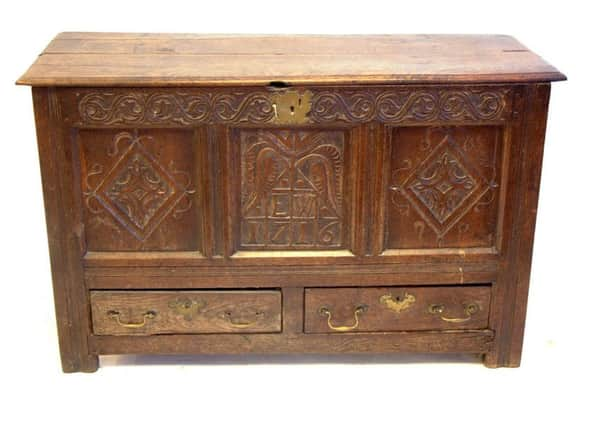Antiques Column with Michael Dowse: Wooden coffers were furniture’s beginning


Coffers that survive today date back as far as the 13th century but they were around many years before that and used for a variety of reasons from storing food or clothing, hiding treasure or coins and even weapons.
They acted as tables, seating and sometimes even coffins. Some were made with feet indicating permanent pieces of furniture while others had huge handles on either end to be used to transport items and curved tops to drain water and so protect their contents.
Advertisement
Hide AdAdvertisement
Hide AdThey were also often filled up and used as a dowry with many examples featuring the bride and groom’s initials and the date of the wedding carved in decoration.
Even now, in the 21st century, unsuspecting parents who have been lucky enough to have daughters may find their coffer housing more than one wedding dress from more than one daughter.
Originally a crude box of planks nailed together, they developed over time and by the 17th century were joined, panelled and often expertly carved.
Later in the century, however, there was a more important change and they began to evolve into a more useful and refined piece of furniture; a novel new addition of a drawer at the bottom became popular.
Advertisement
Hide AdAdvertisement
Hide AdThis development, the missing link between a coffer and the later chest of drawers, a hybrid of the two, was known as a mule chest. And so the coffer made by a joiner was to become the fine chest of drawers with a fixed top made by a cabinet maker.